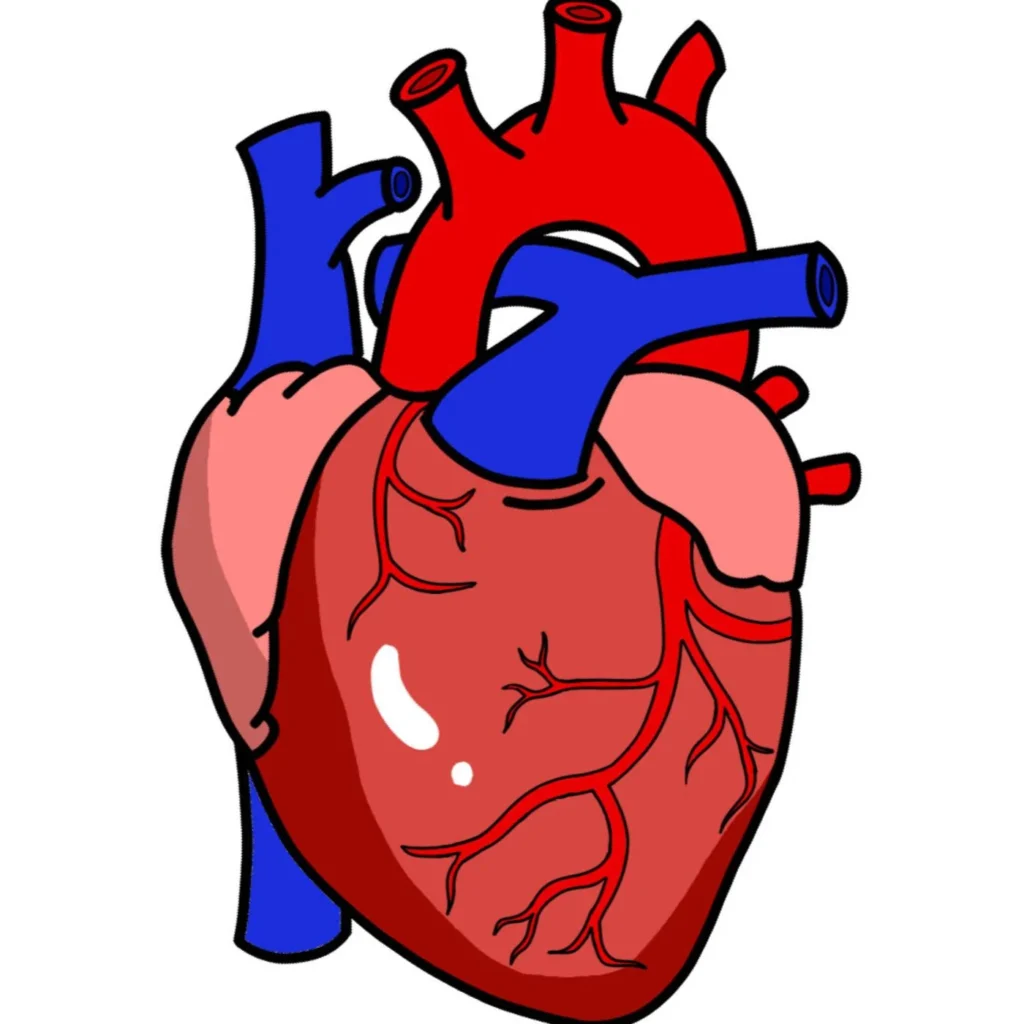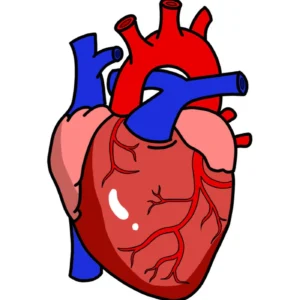
Hodgkin’s Lymphoma Explained (With Classification)
- March 18, 2025
- 11:48 am
Summary
Lymphoma affects lymphocytes and includes Hodgkin's and non-Hodgkin's types. Hodgkin's involves B lymphocytes and is characterized by Reed-Sternberg cells. Symptoms include lymphadenopathy and systemic symptoms like B symptoms. Different subtypes have variable prognoses, with classical Hodgkin's showing better outcomes than non-Hodgkin's. Diagnosis requires biopsy and scans for staging. Treatment involves chemotherapy, radiotherapy, and possibly stem cell transplants. Therapy risks include organ dysfunction and secondary cancers.
Topic:
[00:00 - 00:40] Introduction to Lymphoma
[00:40 - 02:00] Understanding the Lymphatic System
[02:00 - 03:20] Hodgkin’s Lymphoma: Types and Prognosis
[03:20 - 04:40] Symptoms and Clinical Presentation
[04:40 - 06:00] Causes and Risk Factors
[06:00 - 07:40] Diagnosis and Staging Methods
[07:40 - 09:20] Disease Progression and Prognosis
[09:20 - 10:40] Standard Treatment Approaches
[10:40 - 11:40] Management of Relapse and Refractory Cases
[11:40 - 12:20] Long-Term Risks and Side Effects
Transcript
Introduction to Lymphoma
[00:00] Limfoma is a term used for a group of tumors that affect lymphocytes, a subset of white blood cells. They are divided primarily into Hodgkin's lymphoma and non-Hodgkin's lymphoma.
[00:20] develop from common lymphoid progenitor cells, and ultimately become one of three main types. B lymphocytes, T lymphocytes, or natural killer cells. Lymphoma can arise from each of these at any stage of their development. To understand lymphoma, it is important to
[00:40] know the lymphatic system, which is an open circulation within the body that has three main functions. These are immune defence, particularly the adaptive immune response, as lymphocytes are the main cells found in the lymphatic system. Second is aiding in fluid drainage.
Understanding the Lymphatic System
[01:00] Three litres of this forms interstitial fluid, and is returned to the heart by the lymphatic ducts, draining into the subclavian veins. Thirdly, it also has a role in absorption and transport of fatty acids from the small intestine. Overall, the
[01:20] The lymphatic system is composed of primary lymphoid organs where lymphocytes are formed, such as the bone marrow and thymus, and secondary lymphoid organs, including lymph nodes throughout the body, particularly the head, armpits, groin, chest and abdomen.
[01:40] connected by small lymphatic vessels, as well as the spleen and mucosa-associated lymphoid tissue, or MALT. Within this system runs lymph, a clear fluid containing mostly lymphocytes, cell debris and proteins, which gets the name lymph from the
[02:00] Latin deity for freshwater, lympha. Hodgkin's lymphoma is a malignancy affecting the B lymphocyte cells and is divided into classical Hodgkin's lymphoma, which makes up 95% of cases, further divided into four types, those being nodular sclerosis,
Hodgkin’s Lymphoma: Types and Prognosis
[02:20] 70%, which is more common in females than males, whereas the others are more common in males, and this subtype has the most favourable prognosis. Next is mixed cellularity, making up 25%. It tends to affect the older population and as the name suggests has a multitude of cells.
[02:40] including plasma cells and histiocytes. This type is also more common in those with HIV. Lymphocyte rich makes up 5% and is often diagnosed early, and lymphocyte depleted makes up less than 1%, being the least common, and thankfully so, as it is the one
[03:00] one that features the worst prognosis and is often diagnosed late. The other 5% that is not classical Hodgkin's lymphoma, a nodular lymphocyte predominant B cell lymphoma, 75% of which are diagnosed in stage I and have an excellent prognosis.
[03:20] The most common presentation is swelling of lymph nodes, known as lymphadenopathy, that is persistent without any other clear cause, such as recent infection, usually for several months, and most commonly happens in the cervical lymph nodes. This is usually at most mildly
Symptoms and Clinical Presentation
[03:40] painful, with most being painless. In rare instances, the swelling of the lymph nodes themselves can cause symptoms, such as shortness of breath, dysphagia, or even superior vena cava syndrome. Systemic symptoms, known as B symptoms, are present in around one in three cases.
[04:00] which include drenching night sweats, unexplained weight loss of more than 10% usually in the last six months, and unexplained fever. A particular fever pattern seen in Hodgkin's lymphoma is Pell-Ebsstine fever, where there is a cyclical rise and fall in body temperature,
[04:20] over roughly 1 to 2 weeks. Other manifestations include itching, fatigue and alcohol induced pain, which is a very specific but not sensitive sign, meaning it is suggestive of Hodgkin's but not all patients will show the symptom. This is thought to occur
[04:40] due to vasodilation within lymph nodes with alcohol consumption. Associated conditions include paraneoplastic processes such as cerebellar degeneration and Hodgkin's lymphoma is associated with a reduction in cell-mediated immunity and so an increased risk of infections, especially
Causes and Risk Factors
[05:00] if bone marrow is involved. The exact cause and pathophysiology is not understood, but ultimately there is uncontrolled proliferation of the affected lymphocytes that can then form a mass, typically within lymph nodes and spread to other lymph nodes as well.
[05:20] well as organs like the spleen. Over time, they can invade nearby tissues and spread to tissues outside of the lymphatic system. Reed-Sturnberg cells are large malignant cells of the B lymphocyte lineage, that are diagnostic for Hodgkin's disease, that we'll look at more in detail shortly.
[05:40] It has been identified that 20 to 40% of cases have Reed-Sturnberg cells with Epstein-Barr virus antigens present, which is the virus that causes infectious mononucleosis. Not all cases feature this link, however, and the pathophysiology between EBV-positive
[06:00] and negative cases are likely to differ. HIV is thought to increase the risk by around 11 times and roughly 5% of cases are thought to be familial. Diagnosis involves a physical exam evaluating for lymphadenopathy, generally meaning lymph nodes
Diagnosis and Staging Methods
[06:20] than 1cm in size, including the cervical, supraclavicular, inguinal and axillary nodes. Some are considered in large even 0.5cm, such as the supraclavicular nodes. Their size, texture, mobility and tenderness should be noted, with rubbery,
[06:40] non-tender, immobile nodes, without evidence of another cause like infection being particularly suspicious. There should also be palpation of the liver and spleen, looking for enlargement. Blood tests include a full blood count, which if demonstrates a marked leukocytosis, meaning
[07:00] Elevated white blood cell count, or lymphopenia, meaning reduced lymphocyte count, or anemia, would indicate a poorer prognosis. Other bloods include a metabolic panel, including liver and kidney function, electrolytes, and lactate dehydrogenase, as well as an erythrocyte
[07:20] implementation rate. Also, prior to beginning treatment, thyroid function and screening for viruses like HIV and hepatitis should be done. To confirm a diagnosis, histology is required, mostly in the form of an excisional biopsy of a lymph node.
[07:40] Biopsy may be enough in some cases, but fine needle aspiration is not enough. Biopsies are mostly looking for the presence of Reed-Sturnberg cells, and is diagnostic when present. They are cells of a B-cell lineage that is a large cell up to 100
Disease Progression and Prognosis
[08:00] in diameter with characteristic CD30 and CD15 positivity. They are usually multi or binucleated and the nuclei can give an owl eye appearance. There are multiple variants of this cell, one of which being the Hodgkin cell, which is a mononuclear variant.
[08:20] Another variant is the lymphocytic and histiocytic, or popcorn, cell, which have a lobulated nucleus that resembles popcorn, seen in the nodular lymphocyte-predominant B cell lymphoma. Immunohistochemistry is important as it helps distinguish Hodgkin's lymphoma from other lymphomas.
[08:40] Nodular lymphocyte predominant is typically CD30 and 15 negative and positive for CD20 and CD45. A PET scan or CT scan is done to gauge the extent and staging as well as to
[09:00] monitor treatment progress. In the case of a negative PET or CT with unexplained neutropenia or thrombocytopenia, then a bone marrow biopsy may be done. The staging system most commonly used now is the Lugano classification, based on the earlier Ann Arbor classification.
[09:20] Stage 1 is a single lymph node or group of adjacent nodes or a single extra lymphatic site. Stage 2 is two or more nodal groups on the same side of the diaphragm. Stages 1 and 2 are considered limited disease. Stage 3 is lymph node involvement on both sides of the diaphragm, on
Standard Treatment Approaches
[09:40] above the diaphragm with spleen involvement, and stage 4 is diffuse, where there is more than one extra lymphatic site involved. 3 and 4 are considered advanced stages. These are further divided into A or B based on the presence or absence of B symptoms and
[10:00] depending on contiguous extranodal extension. Hodgkin's lymphoma is associated with a better prognosis than non-Hodgkin's. Partly, as in Hodgkin's, the spread tends to be from lymph node to lymph node in a local region, whereas non-Hodgkin's often spread
[10:20] to distant sites. Hodgkin's is associated with over an 80% cure rate, therefore the goals are often cure and limitation of side effects. The treatment for classic Hodgkin's lymphoma usually involves chemo followed by radiotherapy, the most common chemotherapy being AB
[10:40] BVD, standing for Adriamycin, also known as doxorubicin, Bleomycin, Vinblastine and Decarboxyn. Another common regime is Biacop, standing for Bleomycin, Etoposide, Adriamycin, Cyclophosphamide, Oncovin, which
Management of Relapse and Refractory Cases
[11:00] is when crostine, procarvazine and prednisolone. This regime can also be used in children. In the nodular lymphocyte predominant type, because the prognosis is excellent, there is a risk of over treatment and so active surveillance is sometimes opted for.
[11:20] Retuximab, an anti-CD20 monoclonal antibody, is commonly added to the regimes described earlier. In cases of relapse or refractory lymphoma, then there is typically use of high-dose chemotherapy that aims to target all lymphoma cells, but will also target bone marrow cells.
[11:40] and so is followed by an autologous hematopoietic stem cell transplant, where stem cells are taken and frozen from the patient and reintroduced after the high dose chemotherapy. Many different chemotherapy agents can be used. One to keep in mind is the biological agent Brentuxin.
Long-Term Risks and Side Effects
[12:00] an anti-CD30 cell monoclonal antibody. Undergoing chemo and radiotherapy carry their own risks, pulmonary, cardiac and thyroid function tests are also done before beginning and fertility counselling should be done due to the risk to reproductive
[12:20] function. There is also an increased risk for developing other cancers following radiotherapy, particularly breast and lung, in Hodgkin's lymphoma.

